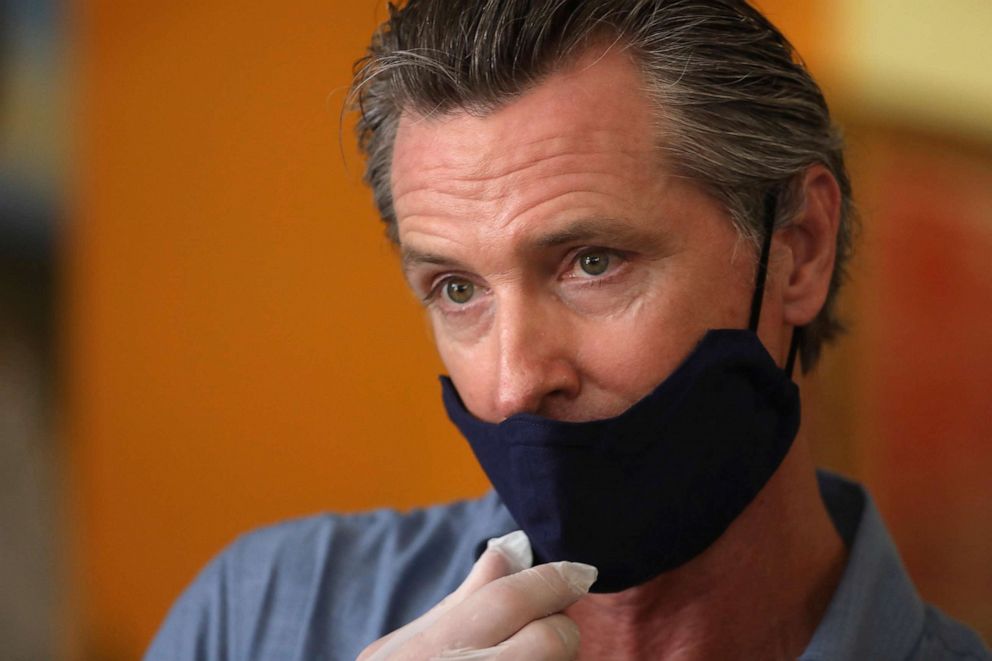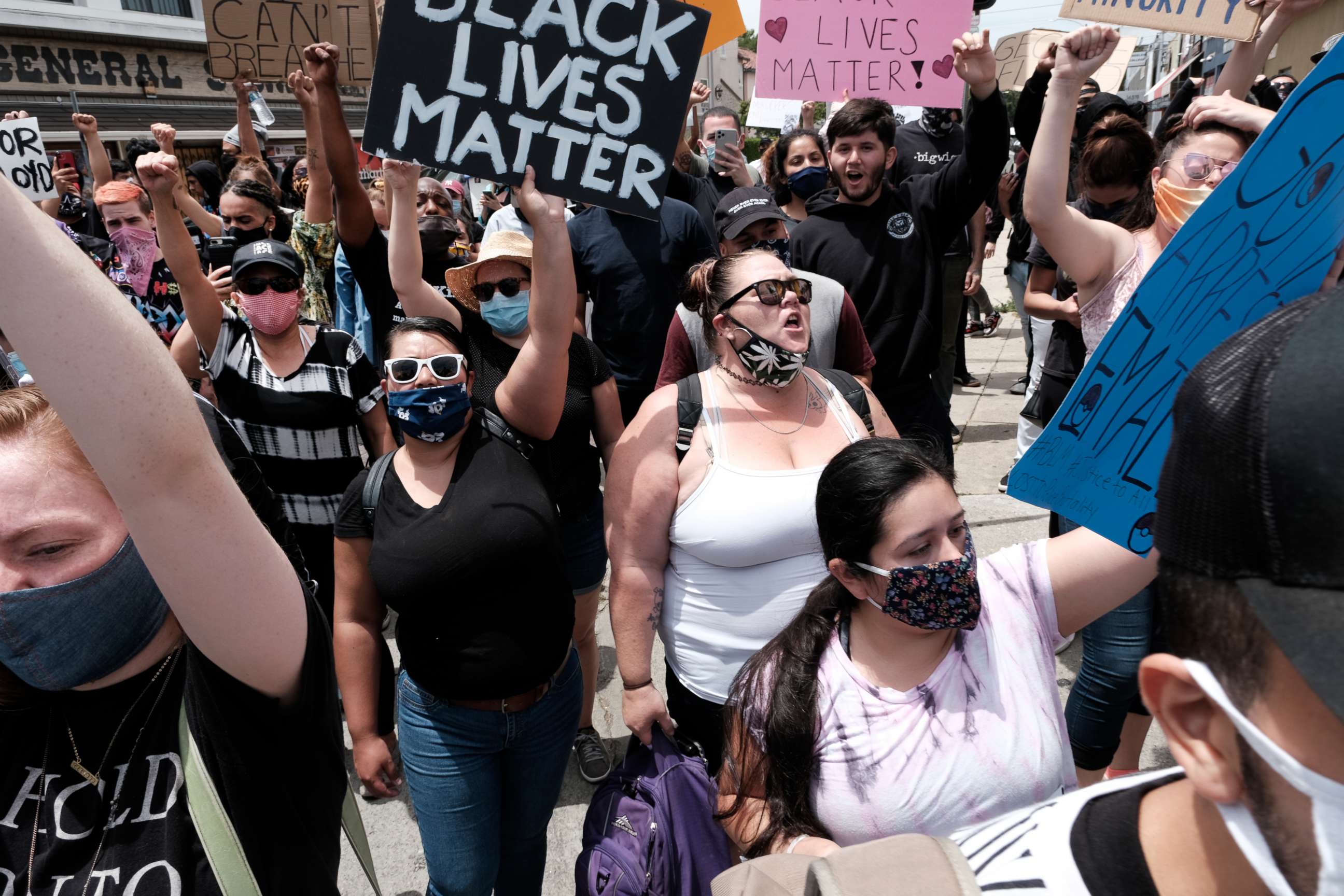What testing data reveals about possible coronavirus spike in LA
Los Angeles COVID data reveals a week of possible increase after Memorial Day.
A snapshot of coronavirus testing data from Los Angeles indicates what many have feared -- that in the wake of relaxed stay-at-home orders, the virus may once again be spreading.
According to an analysis shared with ABC News by Curative, an FDA-authorized testing company responsible for a majority of COVID-19 tests in Los Angeles County, coronavirus cases in Los Angeles could be increasing in the wake of Memorial Day gatherings and the early wave of protests over the killing of George Floyd.
As of May 31, the portion of Los Angelenos testing positive for the virus was hovering at around 4%, according to Curative's data, which offers a roughly representative snapshot of the county as a whole, according to CEO Fred Turner.
But the portion of positive tests began climbing on June 1, up to 6% by June 2 and jumping again to 8.7% by June 3. Although experts agree there's a two-week lag to see the true impact of social movement on infection rates, the Curative data may offer an early glimpse at what's happening in Los Angeles.
The average person does not develop symptoms until about four or five days after they are exposed to the virus, and some people see symptoms from a range of two days to two weeks after exposure, according to the Centers for Disease Control and Prevention.
Los Angeles County began slowly easing stay-at-home orders and allowing some businesses to reopen two weeks ago. Meanwhile, over Memorial Day weekend, thousands of pent-up Los Angelenos flooded beaches, parks and hiking trails. And after the death of Floyd on May 25, thousands more gathered to protest police brutality.
"It is impossible to separate out which is contributing the most of these. Most likely we're seeing Memorial Day and reopening right now," Turner said, meaning that those who became infected over Memorial Day weekend likely account for the increase in positive cases seen during the first week few days of June.
"We really won't know for another week how much of an impact the protests have had," he said.

"While we can't know for sure what is driving these increases in positive tests," said John Brownstein, chief innovation officer at Boston Children's Hospital and an ABC News contributor
"We have seen a resurgence in human mobility in Los Angeles through the month of May and approaching pre-COVID levels in the past week. It's not surprising that this increased mixing is contributing to new cases," Brownstein said.
Curative has contracts in multiple states to conduct COVID-19 testing. The company estimates it is running at least 10% of counties' testing right now across the nation, and told ABC News it is conducting a majority of the testing for LA County.
On a typical day, Curative tests 8,000 to 12,000 people across Los Angeles County at its drive-thru testing sites, in which people swab the inside of their mouths while sitting inside their cars. Turner said that Curative closed all but two of its testing sites during the height of the protests.
Because of these closures, the company said it only tested between 3,000 to 6,000 people per day -- less than half its normal capacity. Turner said it's safe to surmise that the rate of positive cases went up by making an apples-to-apples comparison against the portion of cases only at those two sites.
Still, the Curative analysis may only be one data point amid a confusing mosaic of coronavirus testing. For example, Los Angeles also reports its testing numbers across the entire county, but because of a lag in reporting, those numbers are only confirmed up to May 31.

According to some experts, it may be too early to see the true impact of eased stay-at-home orders, Memorial Day celebrations and the protests on the number of coronavirus cases. Also, using a seven-day average may be a better way to gauge meaningful shifts in coronavirus cases, rather than looking at the daily ups and downs.
"We expect to see the first signs of the impact of reduced social distancing in testing data among those with mild symptoms," Brownstein said. "If that holds true, then we will likely see spikes in hospitalizations and deaths from there."
"As testing capacity has increased, we're seeing more individuals testing positive for COVID-19 in Los Angeles," said Dr. Rekha Murthy, vice president of medical affairs and associate chief medical officer at Cedars-Sinai.
"We have not seen an uptick in people testing positive that's directly related to Memorial Day or the protests," Murthy added. "It may be too early to tell."
Regardless, experts urge everyone attending protests this week to exercise caution and maintain social distance when possible.
"We need to be very cautious to not undo anything we've done over the last few months in being shut down," said Turner. "People's right to protest is very important. It's a very challenging balancing act."
"As a reminder, individuals with coronavirus may lack symptoms and still pose a risk for spreading the virus to others while interacting in close proximity (such as by speaking, coughing or sneezing)," said Murthy.
"We're in this for the long haul," Murthy said. "It's all the more important to be vigilant about hand hygiene, wearing masks, self-care and social distancing."



